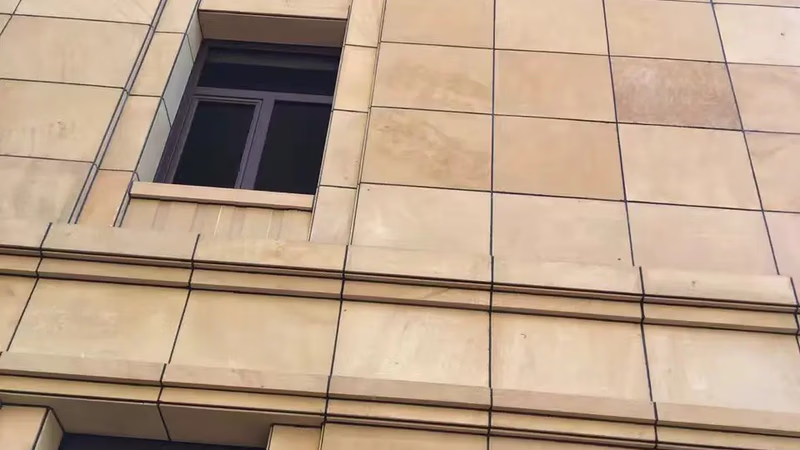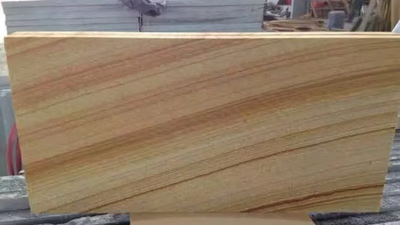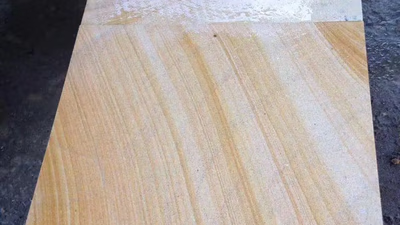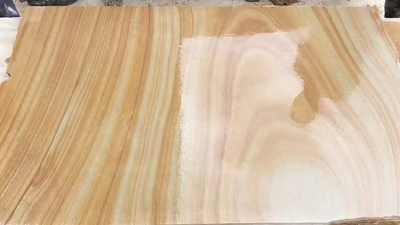
Diverse types of sandstone showcasing unique characteristics.
Sandstone can form in various depositional environments such as deserts, riverbeds, beaches, deltas, and shallow marine settings. Each environment has distinct characteristics, including sediment sources, energy levels, and water chemistry, which can affect the composition and texture of the sandstone formed. The mineral composition of sandstone is influenced by the availability of source materials and the weathering and erosion processes. Common minerals found in sandstone include quartz, feldspar, lithic fragments (derived from pre-existing rocks), clay minerals, and various accessory minerals. The relative proportions of these minerals contribute to the specific characteristics of the sandstone.
Quartz Sandstone is primarily composed of quartz grains. It often has a light color and a granular texture. Quartz sandstone is known for its durability and resistance to weathering. Arkose is a type of sandstone that contains a significant proportion of feldspar alongside quartz grains. The presence of feldspar gives arkose a reddish or pinkish hue. It is commonly found in riverbeds and ancient desert environments. Greywacke is a gray or dark-colored sandstone that contains a mixture of quartz, feldspar, and rock fragments. The rock fragments can be of various sizes and compositions, such as shale, granite, or basalt. Greywacke is often associated with tectonic activity and is commonly found in mountainous regions.
Cross-bedded sandstone is characterized by its distinctive inclined layers or cross-beds, which result from the migration of sand dunes or currents during deposition. These inclined layers give the sandstone a unique and visually appealing pattern. Tuffaceous sandstone is a type of sandstone that contains volcanic ash or tuff fragments. It forms when volcanic ash settles and becomes compacted with sand grains. This type of sandstone often exhibits a mixture of fine and coarse grains. Typically they are related to specific sedimentary environments, but because the composition of the rocks is controlled by the source of the rocks, they are not limited to a specific sedimentation basin. These rocks more or less reflect the geology of the source area, which depends on weathering, elevation, and elevation.
- Calcareous Sandstone
These types of sandstones are not resistant to acidic environments. These conditions deplete the calcium carbonate in them and the stone crumbles. Pure calcite is white so calcareous sandstone is also white - Siliceous Sandstone
Sandstones are often composed of silica grains that are bonded together with silica salts. Therefore, they are very resistant and stable in acidic environments. These types of sandstones are mostly gray. - Iron Oxide Sandstone
This type of sandstone, compacted by iron oxides, is found in brown to red colors and is often durable. - Dolomite Sandstone
Dolomite sandstones bonded with magnesium carbonate and calcium are not very resistant in urban environments. These types of stones are pea-colored.
Weathering and erosion processes break down rocks and transport sediment, influencing the composition and characteristics of sandstone. Different weathering conditions, such as exposure to wind, water, and chemical processes, can lead to variations in the size, shape, and mineral content of sand grains. The formation of sandstone occurs over vast geological time scales, potentially spanning millions of years. Changes in environmental conditions, climate, and sea levels over time can result in the formation of different sandstone types at different periods.
Red sandstone is characterized by its reddish hue, which is primarily due to the presence of iron oxide minerals. It can range from light pink to deep red in color. Red sandstone is often associated with arid desert environments and is widely used in decorative and architectural applications. White sandstone is characterized by its light-colored appearance, often ranging from off-white to pale yellow. It is usually composed of quartz grains and may exhibit a fine-grained texture. White sandstone is commonly used in construction and decorative applications. Brown sandstone typically has a brown or tan coloration, which can vary in intensity and shade. It is commonly enriched with iron oxide minerals, giving it its brownish hue. Brown sandstone is widely used in construction and landscaping due to its warm and natural appearance.
Diagenesis refers to the physical and chemical changes that occur during the transformation of sediment into sedimentary rock. Diagenetic processes, such as compaction, cementation, and mineral alteration, can vary in intensity and duration, leading to differences in the final properties of sandstone. Factors like burial depth, temperature, pressure, and fluid composition influence diagenesis and can result in variations among sandstone types. Tectonic forces, including uplift, folding, faulting, and volcanic activity, can play a role in the formation of different sandstone types. Tectonic processes can cause variations in sedimentary environments, alter the composition of source materials, and introduce additional minerals or rock fragments into the sandstone.
-

Sandstone is a versatile building material known for its durability, aesthetic appeal, and strength, making it suitable for various applications. It is commonly used in facades, walls, flooring, landscaping projects, and outdoor spaces such as pathways and patios. Its thermal properties also make it ideal for fireplace surrounds. However, sandstone has limitations due to its high porosity and water absorption. It is unsuitable for areas exposed to moisture or acidic environments, such as bathrooms or industrial settings. Additionally, sandstone may not withstand heavy loads or extreme weather conditions like freeze-thaw cycles. While it can be used for countertops, it requires regular maintenance to prevent damage from scratching and staining. Overall, understanding the appropriate uses of sandstone is crucial for maximizing its benefits while avoiding potential issues.
-

Sandstone is a versatile natural stone known for its aesthetic appeal and durability. Its unique patterns and warm tones make it suitable for various applications, including countertops, flooring, wall cladding, and outdoor spaces. The material"s excellent thermal insulation properties allow it to remain cool in warm climates, making it ideal for patios and pool areas. Sandstone is widely available across the globe, particularly in regions of Asia, which contributes to its affordability compared to other stone types. As a sustainable resource, sandstone is quarried with minimal processing, promoting environmentally friendly construction practices. Its resistance to weathering and heavy loads makes it suitable for high-traffic areas. Additionally, sandstone requires low maintenance; regular cleaning with mild soap suffices to maintain its appearance. Sealing can enhance its longevity and stain resistance.
The diverse color range of sandstone—from white to red—adds to its appeal in both construction and decorative applications. "
-

Sandstone forms in diverse environments such as deserts, riverbeds, and marine settings, influenced by sediment sources and weathering processes. Its mineral composition includes quartz, feldspar, and clay minerals, which determine its characteristics. Various types of sandstone exist: Quartz Sandstone is durable and light-colored; Arkose contains feldspar and has a reddish hue; Greywacke is dark and mixed with rock fragments; Cross-bedded sandstone features inclined layers from sand dune migration; Tuffaceous sandstone includes volcanic ash. Other types include Calcareous Sandstone, which crumbles in acidic conditions; Siliceous Sandstone, stable in acid; Iron Oxide Sandstone with brown to red colors; and Dolomite Sandstone, which is less resistant in urban areas. Weathering and erosion significantly affect sandstone"s composition over geological time scales. Environmental changes can lead to the formation of different sandstone types at various periods. Red sandstone is known for its reddish hue due to iron oxide, while white sandstone is light-colored and often used in construction. Brown sandstone has a warm appearance enriched with iron oxides.
Diagenesis involves physical and chemical changes during sediment transformation into rock, influenced by factors like temperature and pressure. Tectonic forces also contribute to the diversity of sandstone types by altering sedimentary environments. "
-

Sandstone is a sedimentary rock primarily made of sand-sized mineral particles, predominantly quartz. It forms through the compaction and cementation of sand grains over time. Sandstone is widely utilized in construction due to its durability and aesthetic appeal, serving as a building material for walls, floors, and facades. Its color varies significantly based on mineral content, ranging from white and beige to red and brown. Notable sandstone formations include the Grand Canyon and Petra"s temples. The rock"s texture can be fine- to coarse-grained, with distinct layers reflecting sediment deposition. The cementing material, which can include silica or calcium carbonate, influences the rock"s strength and appearance. Sandstone"s weather-resistant properties make it suitable for outdoor applications, while its ease of shaping allows for diverse architectural uses.
Additionally, its hardness makes it effective for sharpening tools. Overall, sandstone"s versatility in construction and historical significance as a material highlight its importance in various industries. "
-

Sandstone formation in West Asia is influenced by various depositional environments, particularly deserts and ancient river systems. The process begins with the accumulation of loose sand grains, which undergo compaction and lithification to become solid rock. Cementation, involving minerals like silica and calcium carbonate, plays a crucial role in binding the grains together. Notable sandstone formations can be found in locations such as Petra, Wadi Rum, and the Al Hajar Mountains. These areas showcase stunning geological features that attract tourists and filmmakers alike. Sandstone"s permeability makes it valuable for water retention and filtration, contributing to its significance as a watershed. The composition of sandstone varies based on its distance from the source rock, with geological processes like erosion and tectonic activity further shaping these formations over time. Understanding these dynamics is essential for businesses engaged in commodity trade and supply chain solutions within the region. "
-

Sandstone is a sedimentary rock primarily composed of sand-sized grains, predominantly quartz, which provides its hardness and durability. The texture of sandstone varies from fine to coarse-grained, influenced by sorting and compaction. Its color spectrum ranges from tan to red, determined by mineral content and impurities like iron oxide. Sandstone is susceptible to both mechanical and chemical weathering, leading to unique landforms over time. Its workability makes it a favored material for construction and decorative applications, including walls, ceilings, and flooring. Sandstone"s thermal conductivity allows it to retain heat effectively, making it suitable for fireplaces and thermal storage systems. With a low water absorption rate of 1. 5 to 6%, sandstone is often used in outdoor settings such as patios and pool areas.
It can be categorized into four types based on its composition: clay sandstone, calcareous sandstone, siliceous sandstone, and quartzite. Notable structures made from sandstone include the White House and the Taj Mahal. The rock"s porosity varies significantly; high-porosity sandstones can be permeable, facilitating fluid movement essential for groundwater flow and oil reservoirs. Overall, the strength and durability of sandstone depend on its grain size, cementation level, and mineral makeup.






